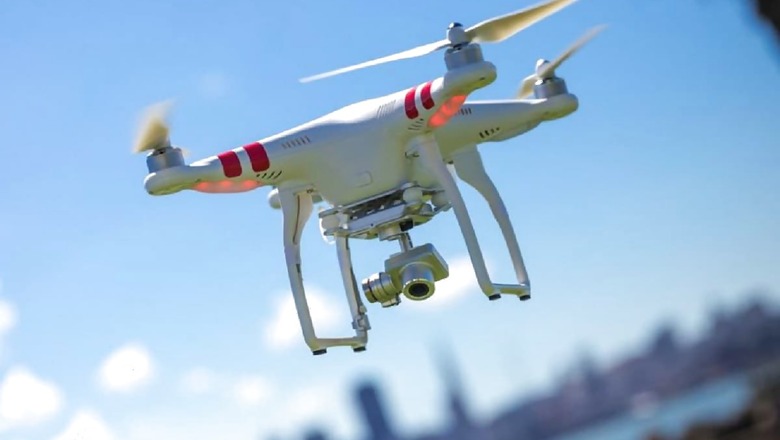
views
Vaccination drive for COVID-19 is going to be a gigantic task even though India has a well-structured vaccination delivery system owing to its universal immunisation programmes. While the country has the world’s largest railways and road networks but a new, efficient mode of transporting vaccines would be required to overcome the logistical challenges considering that India is a vast country with 67 per cent of its population living in rural areas.
This is where a drone-based distribution system plays a vital role. Using drones could make delivery of critical medicines, especially vaccines, to remote areas more accessible and faster. Using drones to deliver medical supplies will help in better resource management of the limited supplies and facilitate just-in-time delivery to the current supply chain system. The smart inventory management and overcoming stockout issues can help ease the current burden and deal with the crisis efficiently. In fact, many countries in Africa are using drones to deliver vaccines. There are instances of drone usage in emergency situations in India as well.
Hence, there is a need to think beyond the conventional methods and adopt the rapid drone delivery system for transportation of vaccines and emergency medicines to tackle life-threatening diseases. Just like emergency usage of vaccination was granted, emergency usage of drone deliveries could also be permitted in the healthcare sector.
Also, the policy makers need to acknowledge that drones are rapidly revolutionizing the healthcare landscape by making faster delivery of critical life-saving medicines. These Unmanned Aircraft Systems (UAS) with advanced models can effectively deal with tremendous pressure piling on the global healthcare sector.
Today, some of the most exciting potential applications come from the use of drones in the healthcare and medical deliveries. Drones are effectively delivering biologicals like blood, serums, viral culture, vaccines and organs in the fastest and safest manner, which is helping save millions of lives. Appreciating its sweeping influence on future medical services, the healthcare industry is leaving no stone unturned to position drones for medical use.
While the modern healthcare system represents some of the greatest achievements of the human intellect to improve the quality of people’s lives, yet many people in rural and underdeveloped quarters of the world still lack access to basic healthcare. Closing these gaps has gained a new urgency during the current pandemic.
With the use of drones, health workers can easily place orders by text message or call and promptly receive their deliveries in just about 30 minutes. Medical drones could fly into these remote areas with supplies that are tailored to the situation. Deliveries can be made from the sky, with the drone descending to a safe height above the drop zone and releasing a box of medicine by parachute or by landing at a designated spot near to health centres it serves. It is high time we think of a future where packages would reach in minutes instead of hours/days.
Drones for healthcare logistics have recently seen a range of landmark moments. Drones have already been used with great success in places like Haiti, where they delivered much-needed aid packages after the 2010 earthquake.
In the event of a serious disaster, drones could take to the skies with the supplies that are essential to keeping individuals alive and healthy, even for extended periods of time. From medications to water and emergency rations, drones get the supplies to the affected areas quickly without the agonizingly long wait that can occur when roads are cut off and airports are shut down.
A research report led by Johns Hopkins Bloomberg School of Public Health indicated that drones in the medical field have the possibility of improving vaccination rates and can aid in various immunization programmes held globally. This is true especially when the rapidly rising COVID cases are leading to an acute shortage of healthcare workers and facilities.
With medical drones allowed to do deliveries and entrepreneurs pushing for new ways to utilize the technology, we can soon expect a faster, cheaper method of delivery of things that we need most, especially during an emergency situation.
Delivery of vaccines and medical supplies utilizing drones is not a new idea. World has already witnessed that drones can be extremely helpful in remote locations that lack proper infrastructure, connectivity and motorable roads. There are numerous advantages of using drones in health care—they can save lives, time, money, and human labour. There are drone models that are completely autonomous and can fly as per the pre-fed flight plans without the need for any human intervention and monitoring.
It is about time the Indian government prepares an empowering policy milieu where use of drones can become mainstream. Initiatives need to be taken in the country to create a system for medical drone procurement and to bridge key healthcare gaps.
Read all the Latest News, Breaking News and Coronavirus News here. Follow us on Facebook, Twitter and Telegram.




















Comments
0 comment